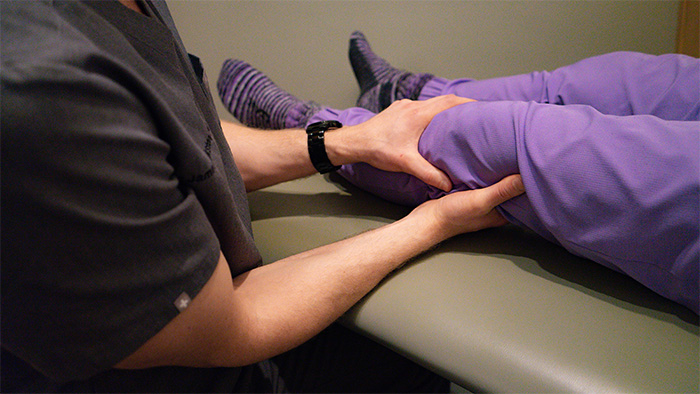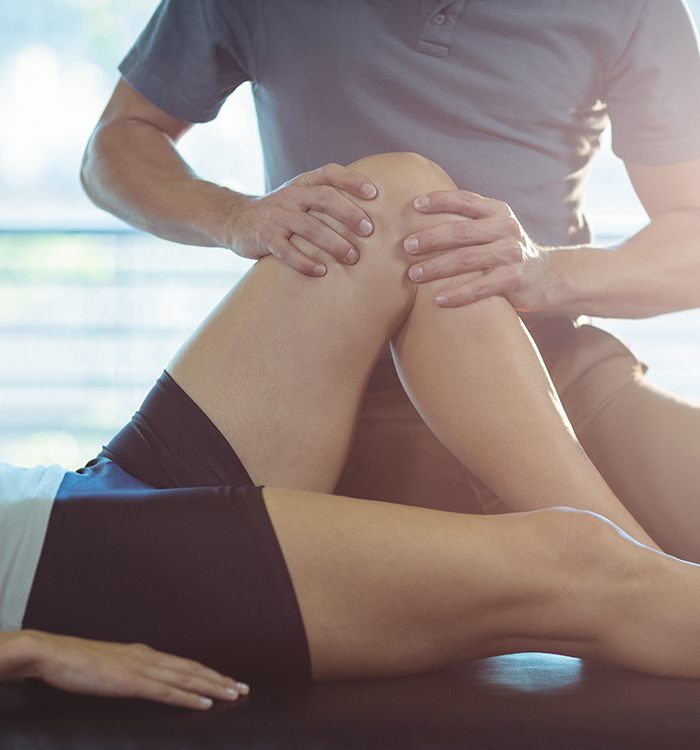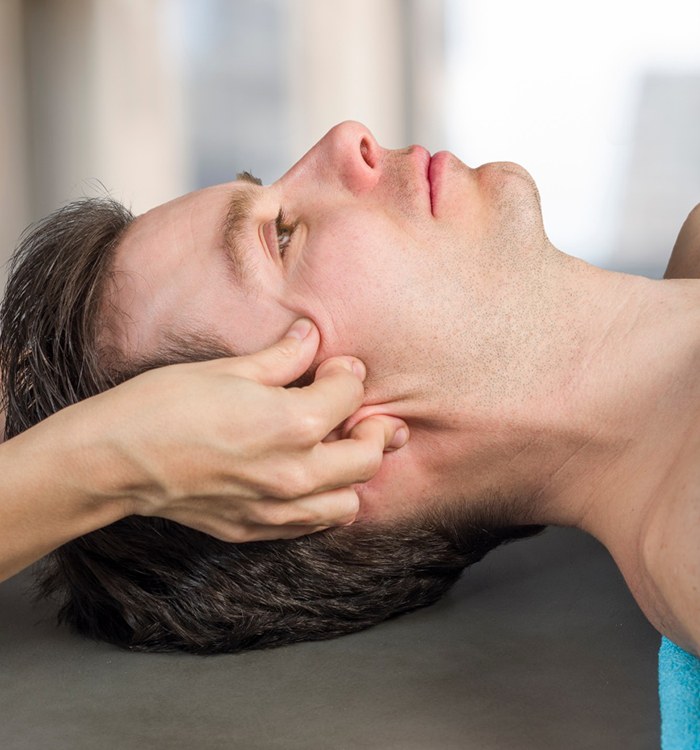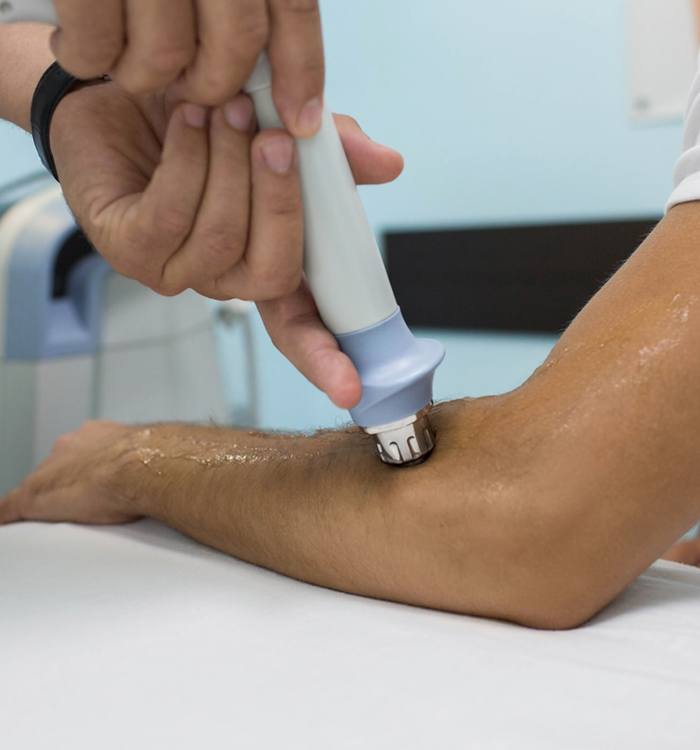
Osteopathic Manipulative Treatment – Asheville, NC
Restore Your Body’s Harmony
When the body is working as it should, all the muscles and joints are balanced, so a person doesn’t experience any lingering pain or aches. This balance may be completely thrown off by an injury or chronic pain, however, and osteopathic manipulative treatment (OMT) is designed to restore it. Dr. Pinkston can move the body in such a way that intends to bring relief to strained structures and help a patient overcome their pain for weeks, months, and years to come, all without relying on invasive surgery or powerful medication. Although several treatments may be needed to properly address a problem, a single appointment can demonstrate the effectiveness of these techniques, and it might be exactly what your body needs to feel normal again. To schedule a consultation, contact us today to start talking about osteopathic manipulative treatment in Asheville, NC.
Why Choose Asheville Non-Surgical Orthopedics for Osteopathic Manipulative Treatment?
-
Gentle & Proven Way
to Relieve Chronic
and Acute Pain -
Treatment Provided by a Specialist
of Neuromusculoskeletal Anatomy
& Treatment -
Able to Improve Pain
in the Neck, Back,
Hips, Head, & More
What Is Osteopathic Manipulative Treatment?

Osteopathic physicians (DOs) receive the same medical education as their allopathic counterparts (MDs), and similarly they are fully licensed and qualified to serve in any role as a physician depending on what area they choose to specialize in. However, in addition to the standard coursework osteopathic physicians receive instruction in manual manipulation, a hands-on approach to patient care. Using a variety of techniques including soft tissue work, joint manipulations, stretching, gentle pressure and resistance, Dr. Pinkston aspires to guide the body into a more natural state while also stimulating the healing process.
Osteopathic Manipulative Treatment for Pain Relief

Misuse or overuse of our muscles and joints may place undue stress on the body and potentially lead to chronic pain that seems to come out of nowhere (an example of this is someone who has neck or back pain due to having poor posture while they sit at a desk), and OMT serves to highlight which tissues are causing someone’s discomfort while also assisting them with letting go of excess tension.
We find it to be especially helpful for those dealing with an injury that has forced the body to move in a way that may place excess stress on certain areas (like how a knee problem can change how someone stands and walks, which often leads to back pain). Dr. Pinkston has also had a lot of success relieving chronic headaches and orofacial pain related to the TMJ (the temporomandibular joint of the jaw) using cranial OMT which allows him to target specific structures that many patients might not even notice are causing them discomfort.
Why Should I See an Osteopathic Physician Versus a Chiropractor?

Chiropractors use a variety of treatments that somewhat resemble OMT, but most chiropractors do not receive formal medical training to diagnose and treat medical conditions like physicians. Osteopathic medical education has a focus on restoring balance to the person as a whole and supporting self-healing and self-regulating mechanisms rather than creating a dependence on a manual treatment provider. Using a grounded knowledge in Osteopathic Medicine that he obtained in medical school and his neuromusculoskeletal residency Dr. Pinkston, can apply OMT techniques while considering a patient’s entire body (not just the injured portion). Because of this more robust training, he offers a higher level of expertise and more options to his patients, so they have a much better chance of achieving lasting results.
Cranial Osteopathy

Cranial osteopathy is a form of osteopathic manipulative treatment. It can benefit the whole body, but it focuses primarily on manipulation of the spine, head, and neck. Precise, gentle movements can promote proper fluid flow in these areas, leading to a range of benefits for patients. A few issues that cranial osteopathy may be able to treat include migraines headaches, poor sleep, muscle tension, tinnitus, and anxiety. It is common for patients to experience an improvement in their symptoms after just one cranial osteopathy session with Dr. Pinkston.
Learn More About Cranial Osteopathy
Shockwave Therapy

Shockwave therapy, also called extracorporeal shockwave therapy (ESWT) or Extracorporeal Pulse Activation Technology (EPAT®), might sound a little scary. In reality, though, this modern treatment can be extremely helpful for patients who are in pain due to issues like sprains, strains, tendinitis, muscle injuries, and other conditions. This technique harnesses the power of acoustic waves to break up scar tissue and kick start the body’s healing process. In some cases, this non-invasive option can help patients to avoid surgery.
Learn More About Shockwave Therapy
Osteopathic Manipulative Treatment FAQs

There is a good chance that like most people, you hadn’t heard of osteopathic manipulative treatment before coming to this page. As such, you probably have questions, and we’re more than happy to answer them! After you read our responses to the popular questions below, be sure to give us a call to ask us anything else we haven’t covered here.
What conditions can be treated with OMT?
Dr. Pinkston has used OMT to successfully help patients dealing with a wide variety of common musculoskeletal conditions, including back pain, neck pain, knee pain, shoulder pain, joint pain and headaches. As such, it is also a useful tool for those who have suffered an injury due to a motor vehicle or sporting accident. During a physical evaluation, Dr. Pinkston will discuss all of the possible treatment modalities that he believes will benefit you, and if OMT is one, he will share how it will contribute to your overall care plan.
How does it feel to get OMT?
While OMT can alleviate pain and tension in various parts of the body, it should be noted that it is very different compared to a massage or chiropractic adjustment, both in its goals and approach. OMT may involve the tensing or stretching of certain muscles in order to restore balance to the body, and while this might feel slightly uncomfortable in the moment, it should lead to relief later. Of course, at no point in a session will OMT cause pain—Dr. Pinkston might just move you in a way that requires your body to exert effort that it isn’t used to as a way to help you self-heal.
How many sessions of OMT will I need?
The number of OMT sessions a patient needs will largely depend on the extent and type of their injury as well as their personal wellness goals and desired recovery timeline. In almost all cases, a patient will be recommended to undergo multiple sessions of OMT, but the overall number will be different from patient to patient. Dr. Pinkston will discuss this detail during your consultation as well as go over other treatment options that can be used alongside OMT to potentially speed up the healing process.
Is OMT covered by insurance?
Most insurance plans do offer coverage for OMT if you have out-of-network benefits.